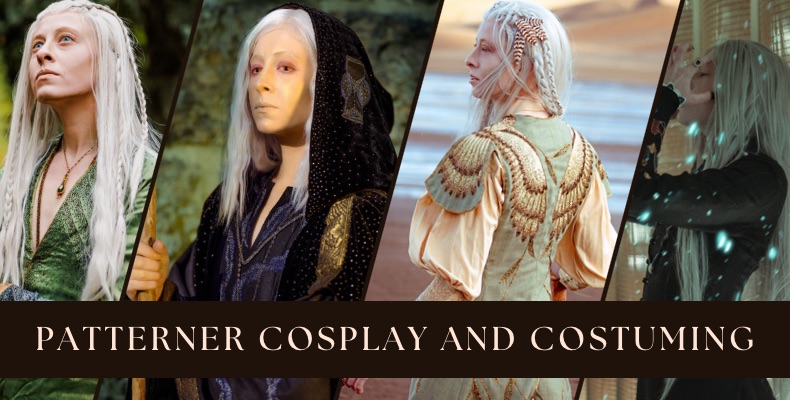I like Professor Trelawney. I think she's somewhat unfairly maligned. As someone who can come off as excessively eccentric myself, I sympathize with how she's come to have such a fraught relationship with the world around her. So I cosplayed her. My favorite part of the costume is the sleeveless overcoat that she wears in The Deathly Hallows Part 2, so that's where the lion's share of my references come from.
Shall we start with the sleeveless overcoat? I made mine out of boiled wool. Hers must be wool, too, but I couldn't find anything with a similar geometric star motif, so I made those myself with a stencil and discharge paste. The boiled wool was a calculated choice on my part, as it looks to me like the original overcoat has raw edges and is unhemmed, meaning the textile cannot ravel along the cut edges. Boiled wool is woven and then felted, so it's well-suited for this sort of thing. My mother was kind enough to spin the wool yarn I used to blanket stitch the edges of the overcoat.
My tunic is made of a beautifully-woven "coarse" silk. The original has vine patterns on it, but I came to the conclusion that these were machine-embroidered on the yardage before the garment was made rather than hand-embroidered. I couldn't find anything similar, and much of the tunic would be covered, so I only embroidered the sleeves. The tassel fringe was a lucky find in that it matched the color of the silk perfectly.
To emulate Professor Trelawney's wild curls, I tightly curled a straight wig and then saturated it with pomade to help the curls maintain their definition. There's some frizz to her hair, but not a huge amount, so I wanted to make sure that the curls wouldn't break up too much with wear.
The tunic and overcoat have since become one of my favorite winter ensembles. There is nothing like wool and silk to keep warm during northeastern winters!
Progress posts:
Making the Impossible Possible







































